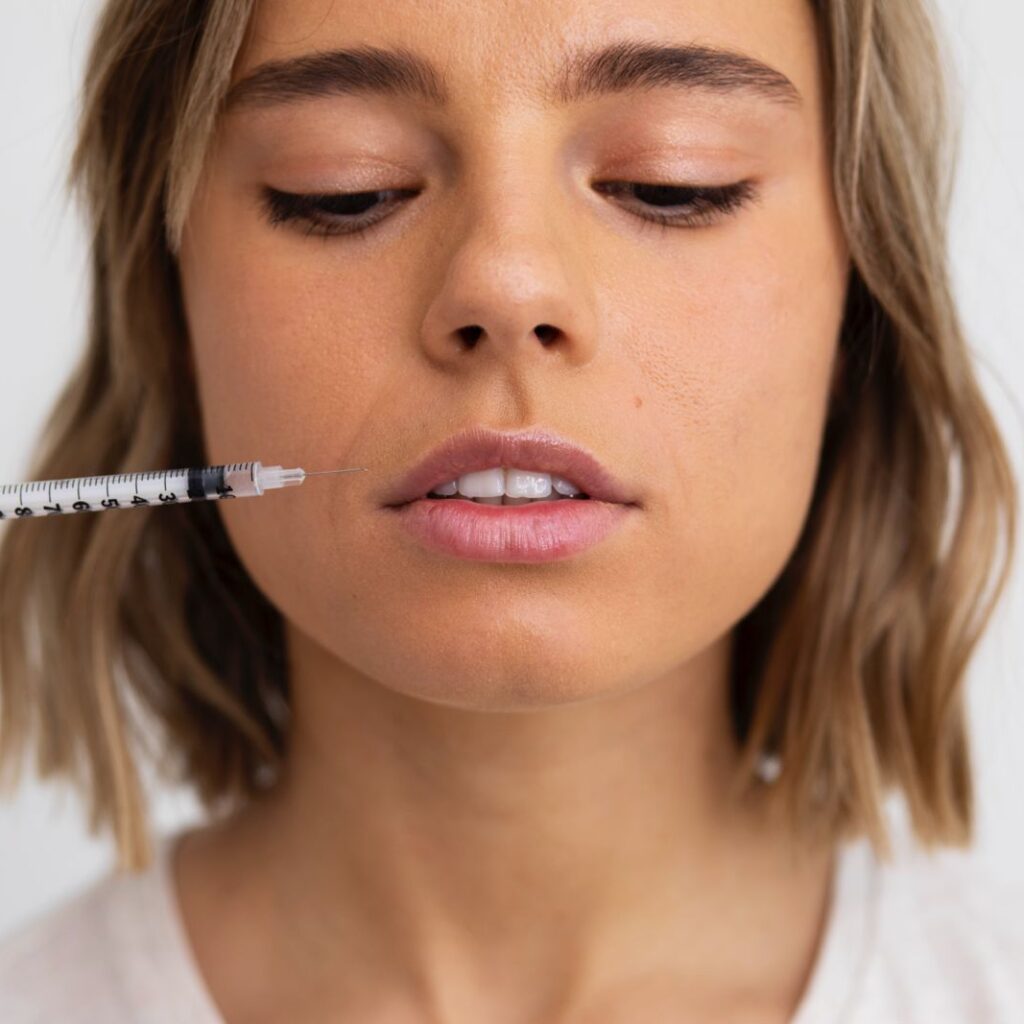
Lip enhancement with hyaluronic acid fillers has become one of the most popular aesthetic treatments today – and for good reason. Hyaluronic acid is a naturally occurring substance that adds volume, hydrates, and improves lip contours without the need for surgical intervention. However, as with any cosmetic procedure, the quality of the results depends not only on the product used and the practitioner’s expertise, but also on the client’s knowledge and behavior.
It’s important to emphasize that even minor mistakes can lead to unwanted outcomes that affect not just the appearance, but also the health of the lips. Below, we highlight some of the most common mistakes that can occur during or after lip filler treatments – and why they should be avoided at all costs.
1. Choosing an Unqualified Provider or Unverified Facility
One of the most significant—and potentially dangerous—mistakes is receiving treatment from an unverified aesthetic provider or someone without proper medical education and licensing. While the cost of treatments performed by self-taught aestheticians or those operating out of private homes is often lower, the risks are substantially higher.
Lip augmentation is not merely a cosmetic procedure—it requires in-depth knowledge of facial anatomy, proper injection techniques, and experience with dermal fillers. A lack of professional training can result in asymmetry, filler migration, infection, or more serious complications such as vascular occlusion.
To avoid these risks, always schedule your treatment at a licensed medical aesthetic clinic. Confirm that the provider is a certified healthcare professional, uses FDA-approved products, and operates in a medically regulated setting.
2. Unrealistic Expectations and Disregarding Facial Anatomy and Proportions
Every face is unique—what looks beautiful on one person may not suit another. One of the most common mistakes occurs when patients are influenced by ‘Instagram ideals’ or request lips that resemble those of a particular celebrity, without considering their own natural facial structure. This often leads to disappointment or overcorrection.
The most attractive results are always those that harmonize with your individual facial features, expressions, and proportions. An experienced aesthetic provider understands how to tailor lip volume and shape to complement the rest of the face, creating a refined and sophisticated outcome.
3. Injecting Too Much Filler in a Single Session
Another common mistake is injecting an excessive amount of hyaluronic acid filler during a single treatment. While many patients desire a noticeable and immediate result, a sudden increase in volume often leads to an unnatural appearance, tissue tension, and a higher risk of complications. Ideally, volume should be built gradually, in stages, allowing time for the tissue to adapt.
Less is more—especially when it comes to the face. An experienced aesthetic provider will always recommend a conservative, step-by-step approach. Hyaluronic fillers can be layered over time to achieve the desired result, but it’s crucial to respect the natural anatomy of the lips and the lower third of the face.
4. Poor Injection Technique and Unwanted Aesthetic Outcomes
If filler is injected too superficially, outside the natural anatomical boundaries of the lips, or unevenly, it can lead to undesirable aesthetic results.
When the filler crosses the vermilion border and enters the area of the philtral columns, it disrupts the natural definition of the lips. This mistake often results in the loss of the lips’ delicate contour, creating two uniform ‘sausage-like’ lips instead of a well-defined shape, or the well-known ‘duck lips’ effect where the upper lip appears disproportionately large.
One of the most noticeable signs of poor injection technique is the so-called ‘inverted lips’ effect. This occurs when too much filler is injected beneath the mucosa, causing the inner lip tissue to protrude outward. The exposed mucosa becomes dry, irritated, and may crack. In addition to its unflattering appearance, this condition can lead to localized inflammation, cheilitis, and even chronic stomatitis.
5. Lip Filler and the Risk of Fibrosis
If lumps or nodules appear after treatment and do not resolve within a few weeks — and instead begin to grow — this may be a sign of fibrosis. Fibrosis is the excessive buildup of connective tissue as a response to inflammation, often caused when the body tries to ‘wall off’ improperly injected filler. Common causes include poor injection technique, vascular injury, filler migration, or the formation of microcysts.
6. Overdoing Maintenance Treatments
Some patients, eager to maintain or enhance their results, return for touch-ups every few weeks without allowing previous filler to fully break down or integrate into the tissue. This can result in the so-called ‘overfilled look,’ where the lips appear unnaturally swollen, with blurred borders and possible migration of the filler beyond the intended area.
Experienced aesthetic providers understand the importance of respecting the body’s natural metabolic pace and recommend treatment intervals tailored to each patient’s individual filler longevity and tissue response.
7. Neglecting Pre-Treatment Preparation and Aftercare
The aesthetic outcome doesn’t depend solely on the procedure itself—it’s also shaped by what you do before and after treatment.
Patients often underestimate the importance of following pre- and post-care instructions. Consuming alcohol, taking blood-thinning medications, using tanning beds, touching or massaging the lips, drinking hot beverages, applying lipstick, or exposing the area to sunlight immediately after the procedure can increase the risk of irritation, infection, and uneven filler absorption.
Proper aftercare is just as important as the injection technique and should be taken seriously. Closely following your provider’s guidance can significantly reduce the chances of swelling, bruising, and complications.
With that in mind, before undergoing lip correction with hyaluronic acid fillers, take the time to educate yourself, ask the right questions, and choose a trusted provider who can deliver not just beautiful results—but also a safe and professional experience.
Leave a Comment